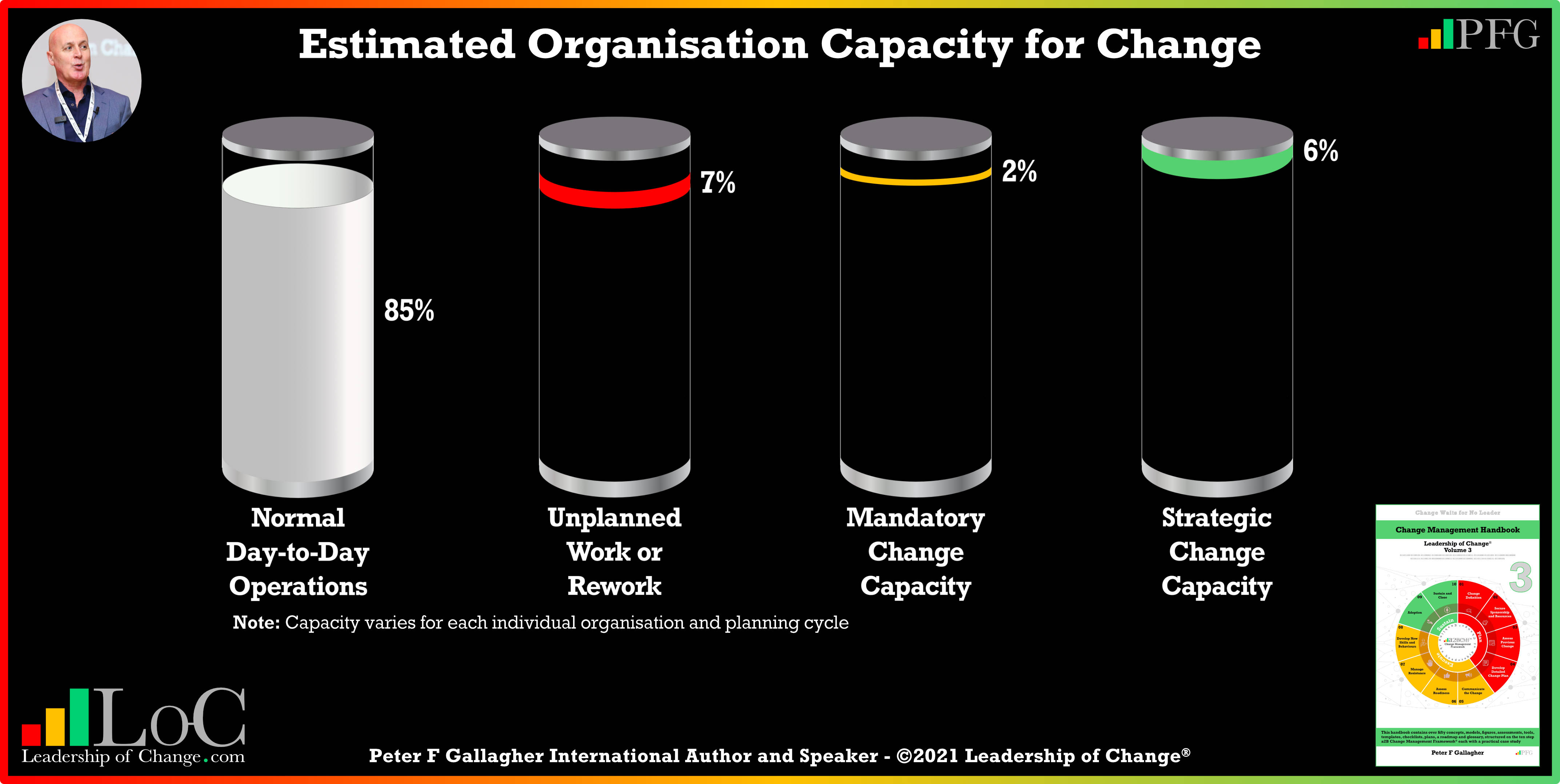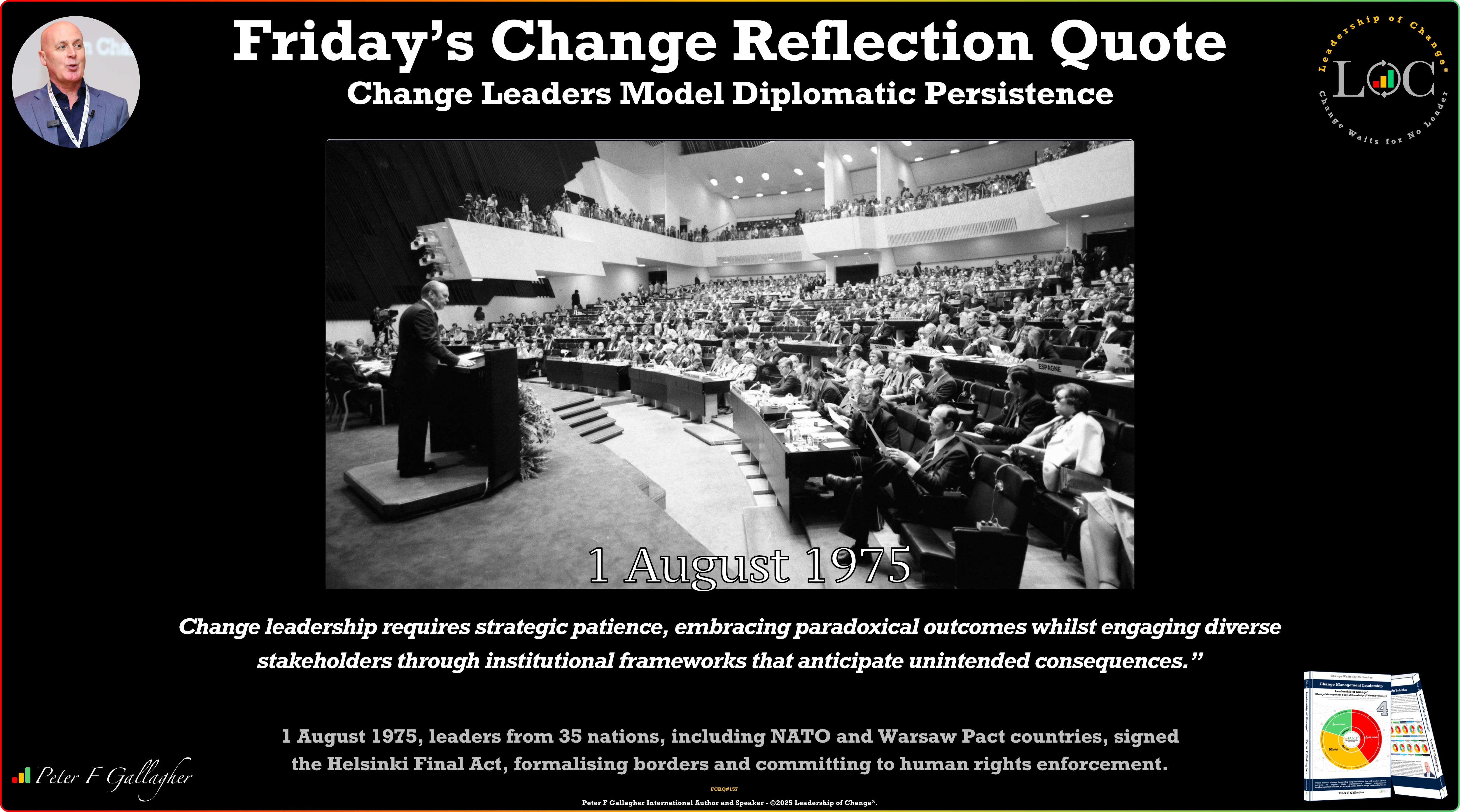
An organisation’s capacity can be defined as the organisation’s total ability to deliver normal day-to-day operations and change activities. If the organisation does not have change capacity it is unlikely the employees will be able to take on any extra workload. Getting this balance right can mean the difference between successfully delivering both, however the data from the change history assessment (CHA) constantly highlights this as a challenge. The feedback from employees is that their workload is not considered when the organisation is implementing change. Specific feedback indicates that workload is not taken into account when learning new software, technology, systems, methods or processes. This change overload not only causes workforce stress but also creates resistance to the change that would otherwise have been accepted.
“Organisation change capacity and employee workload are ignored considerations in change implementation, until they become the reason for failure”
Capacity and workload are serious considerations. Not only should the organisation have a strategic planning process, the output in terms of available capacity should be an important input factor to change sponsors and their teams when planning their change programmes. So, how much capacity should an organisation have for change as it delivers normal day-to-day operations? There are typically four key organisational capacity components
There are typically four key organisational capacity components:
~ Normal Day-to-Day Operations
~ Unplanned Work or Rework
~ Mandatory Change Capacity
~ Strategic Change Capacity
The percentage splits of the four key organisational capacity components will vary from organisation to organisation and from year to year. The important concept is that organisation and change professionals might live in a world where they see their change programme or project as the most important thing. In reality however, their change programme is only small in comparison to normal day-to-day operations. Another important consideration is that the organisation’s leaders tend to think that successful change implementation will not take much effort and because it is important everyone will support delivery. Great leaders and their organisation's don’t just focus on what to do to become the best, but also what not to do, and what to stop doing. It is important to have the discipline to only start the change projects that improve performance.
“Unless the change programme is continually aligned to the organisation’s capacity it will be unable to deliver speedy benefits or value to the organisation”
By Peter F Gallagher
Keywords: Leadership, Change Management, Business Strategy

 Seven Rules of Brilliant Speakers That Are Not Taught at University
Seven Rules of Brilliant Speakers That Are Not Taught at University When Private Alignment Isn’t Public: The Hidden Saboteur of Transformation
When Private Alignment Isn’t Public: The Hidden Saboteur of Transformation Friday’s Change Reflection Quote - Leadership of Change - Change Leaders Model Diplomatic Persistence
Friday’s Change Reflection Quote - Leadership of Change - Change Leaders Model Diplomatic Persistence The Corix Partners Friday Reading List - August 1, 2025
The Corix Partners Friday Reading List - August 1, 2025 The ICJ’s Landmark Climate Decision: A New Era of Risk for Companies
The ICJ’s Landmark Climate Decision: A New Era of Risk for Companies